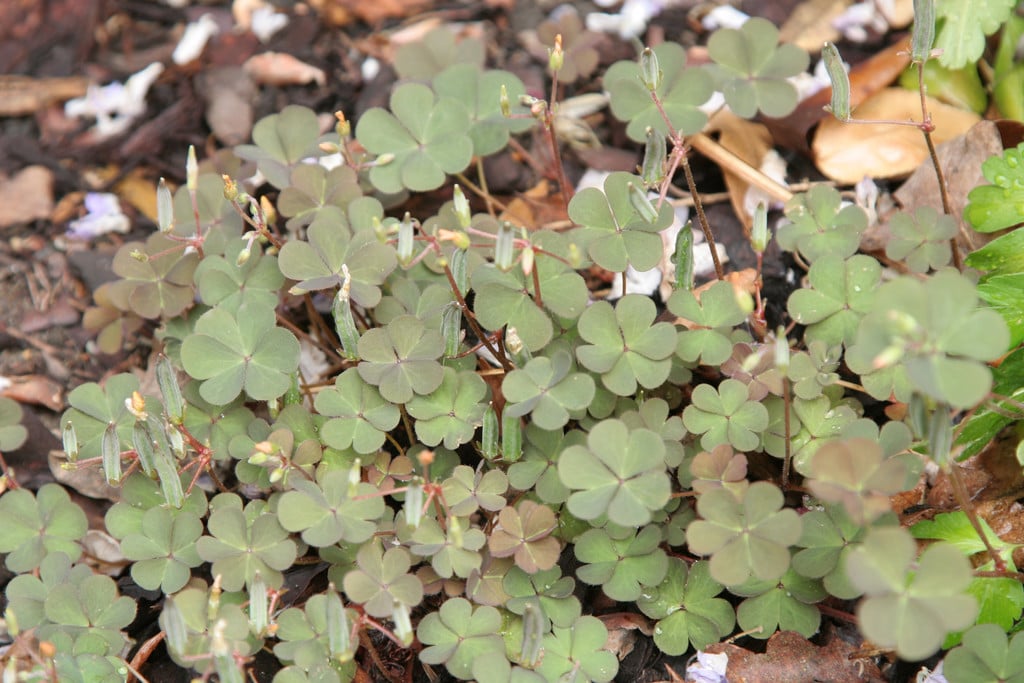Oxalis corniculata
creeping wood sorrel
A ground-hugging perennial with branched, creeping stems, small, clover-like leaves, varying from bright mid-green to dark red-purple. Small, yellow, five-petalled flowers are followed by upright, five-ribbed seed pods
Other common names
creeping oxaliscreeping yellow oxalis
see morenasturtium wood sorrel
procumbent yellow sorrel
procumbent yellow wood sorrel
Size
Ultimate height
Up to 10cmTime to ultimate height
2–5 yearsUltimate spread
0.1–0.5 metresGrowing conditions
Moisture
Moist but well–drained, Well–drainedpH
Acid, Alkaline, NeutralColour & scent
| Stem | Flower | Foliage | Fruit | |
| Spring | Yellow | Green Purple | ||
|---|---|---|---|---|
| Summer | Yellow | Purple Red | ||
| Autumn | Red Purple | |||
| Winter |
Position
- Full shade
- Full sun
- Partial shade
Aspect
East–facing or South–facing or West–facing or North–facing
Exposure
Exposed or Sheltered Hardiness
H5Botanical details
- Family
- Oxalidaceae
- Native to GB / Ireland
- No
- Foliage
- Deciduous
- Habit
- Matforming
- Genus
Oxalis can be annuals or perennials, with fibrous, bulbous or rhizomatous rootstocks, palmately divided leaves and funnel-shaped or bowl-shaped flowers that mostly close in dull weather and at night
- Name status
Correct
How to grow
Cultivation
Seeds and spreads rapidly on paths, walls, waste and cultivated ground. May have the potential to become a nuisance in lawns, beds and borders, tubs and pots and greenhouses if not well managed. See oxalis for more information
Propagation
Spreads mostly by seed, though stems also root at the nodes
Suggested planting locations and garden types
Pruning
No pruning required
Pests
Generally pest-free
Diseases
Generally disease-free
Get involved
The Royal Horticultural Society is the UK’s leading gardening charity. We aim to enrich everyone’s life through plants, and make the UK a greener and more beautiful place.
